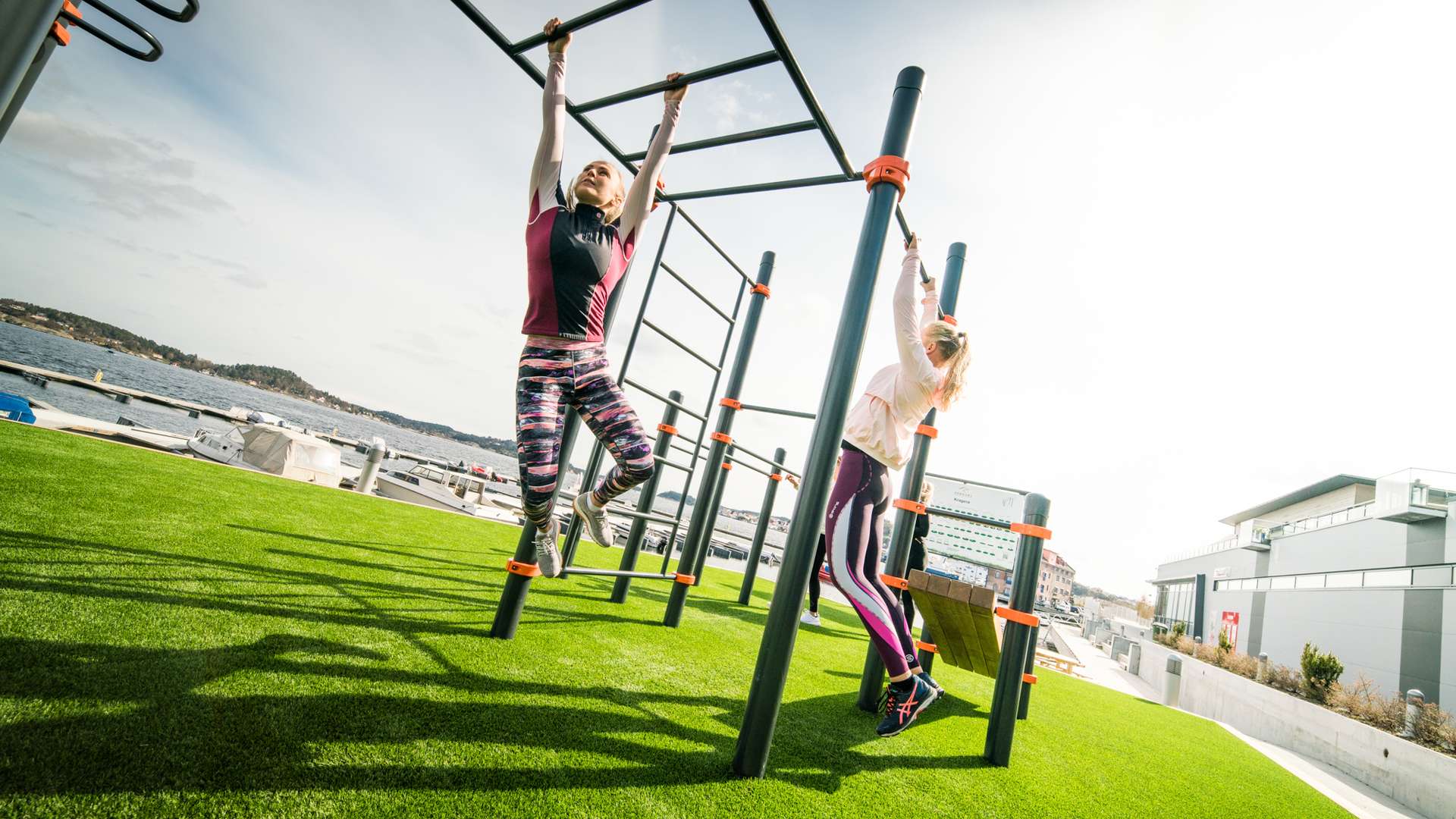
It may be necessary to calculate the workload of a sports ground both to determine its capacity and to ensure the safety and comfort of playing sports. To do this, several factors must be taken into account, such as the size of the site, the type of sport, the number of people involved and the time of classes. If you need all this to be taken into account, then you should use outdoor playgrounds from a manufacturer who is responsible for their work and provides guarantees. Let's take a closer look.
Contents
- Step 1: Determining the area of the court
- Step 2: Determining the type of sport
- Step 3: Determining the capacity of the court
- Step 4: Determining site occupancy
- Step 5: Calculating site occupancy
- Step 6: Taking into account additional factors
- Step 1: Determining the area of the site
- Step 2: Determining the type of sport h2> The next step is to determine the type of sport that will be played on the site. Different sports require different areas on the court, as well as different distances between practitioners. For example, for playing basketball you need to have free space around the basket, and for practicing yoga, a smaller area is enough. Step 3: Determine the capacity of the court Once the type of sport has been determined, the next step is to determine the maximum capacity of the site. This number depends on the type of sport that will be played on the court and can be calculated using standard formulas or recommendations for each sport. For example, for basketball, it is recommended to have at least 84 square meters of floor space and a capacity of no more than 10 people. Step 4: Determining the occupancy of the court < p>Determining the workload of the site depends on the time during which the lesson will be held. If the site is used to its full capacity throughout the day, then it will be fully loaded. However, if classes will be held only for a certain time or days, then the workload of the site can be calculated from the time of classes and the number of students. To do this, you need to know how many hours of classes will be held per day, as well as how many people will work on the site at the same time. Step 5: Calculate the workload of the site< /h2> The site occupancy can be calculated by dividing the maximum capacity by the number of hours per day the site will be in use, and then multiplying by the number of sessions per day. For example, if the maximum capacity of a basketball court is 10 people, and classes will be held 4 hours a day and 2 times a day, then the workload of the court will be (10/4) * 2 = 5 people. Step 6: Accounting for additional factors When calculating the occupancy of the site, it is also necessary to take into account additional factors that may affect its capacity. For example, if the site will host competitions or team training, then the maximum capacity may be increased. However, if beginner classes are to be held on the site, the capacity may be reduced. It is also important to take into account the rules and requirements set by the organizers of the sports ground, as well as local laws, which may include restrictions on the number of participants and time of practice. In conclusion, when calculating the occupancy of a sports field, several factors must be taken into account, such as the size of the field, the type of sport, the number of people involved and the time of classes. Calculating the workload of the site can help ensure the safety and comfort of classes, as well as improve the quality of training and competition held on it. If you liked the article, we recommend reading How to lose weight with dancing Secrets of Proper Body Posture in Yoga Asanas: The Path to Harmony
- Step 3: Determine the capacity of the court
- Step 4: Determining the occupancy of the court
- Step 5: Calculate the workload of the site< /h2> The site occupancy can be calculated by dividing the maximum capacity by the number of hours per day the site will be in use, and then multiplying by the number of sessions per day. For example, if the maximum capacity of a basketball court is 10 people, and classes will be held 4 hours a day and 2 times a day, then the workload of the court will be (10/4) * 2 = 5 people. Step 6: Accounting for additional factors When calculating the occupancy of the site, it is also necessary to take into account additional factors that may affect its capacity. For example, if the site will host competitions or team training, then the maximum capacity may be increased. However, if beginner classes are to be held on the site, the capacity may be reduced. It is also important to take into account the rules and requirements set by the organizers of the sports ground, as well as local laws, which may include restrictions on the number of participants and time of practice. In conclusion, when calculating the occupancy of a sports field, several factors must be taken into account, such as the size of the field, the type of sport, the number of people involved and the time of classes. Calculating the workload of the site can help ensure the safety and comfort of classes, as well as improve the quality of training and competition held on it. If you liked the article, we recommend reading How to lose weight with dancing Secrets of Proper Body Posture in Yoga Asanas: The Path to Harmony
- Step 6: Accounting for additional factors
- If you liked the article, we recommend reading
Step 1: Determining the area of the site
The first step in calculating the workload of a sports field is to determine its area. To do this, you need to measure the length and width of the site and multiply these values by each other. For example, if the pitch is 20 meters long and 10 meters wide, then its area will be 200 square meters.
Step 2: Determining the type of sport
h2>
The next step is to determine the type of sport that will be played on the site. Different sports require different areas on the court, as well as different distances between practitioners. For example, for playing basketball you need to have free space around the basket, and for practicing yoga, a smaller area is enough.
Step 3: Determine the capacity of the court
Once the type of sport has been determined, the next step is to determine the maximum capacity of the site. This number depends on the type of sport that will be played on the court and can be calculated using standard formulas or recommendations for each sport. For example, for basketball, it is recommended to have at least 84 square meters of floor space and a capacity of no more than 10 people.
Step 4: Determining the occupancy of the court
< p>Determining the workload of the site depends on the time during which the lesson will be held. If the site is used to its full capacity throughout the day, then it will be fully loaded. However, if classes will be held only for a certain time or days, then the workload of the site can be calculated from the time of classes and the number of students. To do this, you need to know how many hours of classes will be held per day, as well as how many people will work on the site at the same time.
Step 5: Calculate the workload of the site< /h2>
The site occupancy can be calculated by dividing the maximum capacity by the number of hours per day the site will be in use, and then multiplying by the number of sessions per day. For example, if the maximum capacity of a basketball court is 10 people, and classes will be held 4 hours a day and 2 times a day, then the workload of the court will be (10/4) * 2 = 5 people.
Step 6: Accounting for additional factors
When calculating the occupancy of the site, it is also necessary to take into account additional factors that may affect its capacity. For example, if the site will host competitions or team training, then the maximum capacity may be increased. However, if beginner classes are to be held on the site, the capacity may be reduced.
It is also important to take into account the rules and requirements set by the organizers of the sports ground, as well as local laws, which may include restrictions on the number of participants and time of practice.
In conclusion, when calculating the occupancy of a sports field, several factors must be taken into account, such as the size of the field, the type of sport, the number of people involved and the time of classes. Calculating the workload of the site can help ensure the safety and comfort of classes, as well as improve the quality of training and competition held on it.
If you liked the article, we recommend reading
- How to lose weight with dancing
- Secrets of Proper Body Posture in Yoga Asanas: The Path to Harmony
- Если Вам понравилась статья, рекомендуем почитать
- A child from three parents associated with IVF is eliminated from hereditary diseases
- British pharmaceuticals are looking for a way to Vietnam









